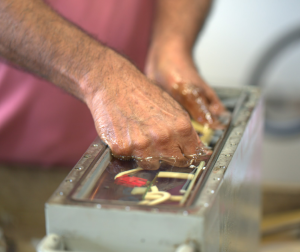In the year 1941, World War II was in full swing, and every radio broadcast brought news of victories, defeats, and challenges that loomed ahead. But while the world’s attention was riveted on the battlefront, behind the scenes, the steel industry was undergoing a transformation that would change the course of modern industrialization.
At the dawn of the 1940s, the steel industry was a significant force, yet not prepared for the demands of global warfare. The sudden need for weapons, ships, tanks, and aircrafts required an exponential increase in steel production. Mills that had been producing domestic goods suddenly pivoted to military production.
The Sleeping Giant Awakens
In the United States, President Franklin D. Roosevelt referred to America as the “Arsenal of Democracy”. This was not just a catchy phrase but a promise. The U.S. would leverage its industrial might to aid the Allies. Central to this effort was the steel industry.
In places like Pittsburgh, Gary, and Birmingham, steel mills that had once been working at a steady pace suddenly burst into life 24/7. The fires in the furnaces burned brighter and hotter, churning out steel at a pace unimaginable before the war. But the machines weren’t the only things working at full capacity; the workers too were putting in longer hours, driven by a sense of national duty.
This war-time production had another effect: innovation. As necessity is the mother of invention, the steel industry saw the birth of newer methods of production, increasing efficiency, and reducing waste. The techniques that emerged during the war years became foundational for the post-war boom in industrialization.
The World After the Storm
Once the guns fell silent and peace treaties were signed, there was a concern. Would the steel industry, which had grown massively during the war, suddenly shrink back? The answer was a resounding no.
Post-war reconstruction required vast amounts of steel. Europe, ravaged by the war, needed rebuilding. The infrastructural damage in countries like France, Germany, and the Soviet Union was monumental. They needed roads, bridges, buildings, and more. The demand for steel did not decrease; instead, it shifted from war materials to infrastructural and domestic goods.
Moreover, the technological advancements and new techniques developed during the war years paved the way for a more modern, efficient steel industry. Continuous casting, for instance, was a method introduced during this time which streamlined the process of turning molten steel into solid shapes.
The Rise of the East
Another significant change was the shift in global leadership in steel production. Before the war, Europe was at the forefront of steel manufacturing. However, the war left European industries in ruins, allowing other nations to catch up and, in some cases, overtake them.
Japan, despite suffering massive damages during the war, made a remarkable comeback. By the 1960s, Japan had modernized its steel industry, incorporating the latest technologies and methods, which led them to become one of the world’s largest steel producers.
Conclusion
World War II was a dark period in human history, but from its fires arose an evolution in various industries, notably steel. The war pushed the industry to its limits, but from that pressure emerged innovations that would drive the world into a new age of industrialization. From the smoky battlefronts to the gleaming skyscrapers of the post-war era, the journey of steel is a testament to human resilience, innovation, and the unyielding drive to progress.
